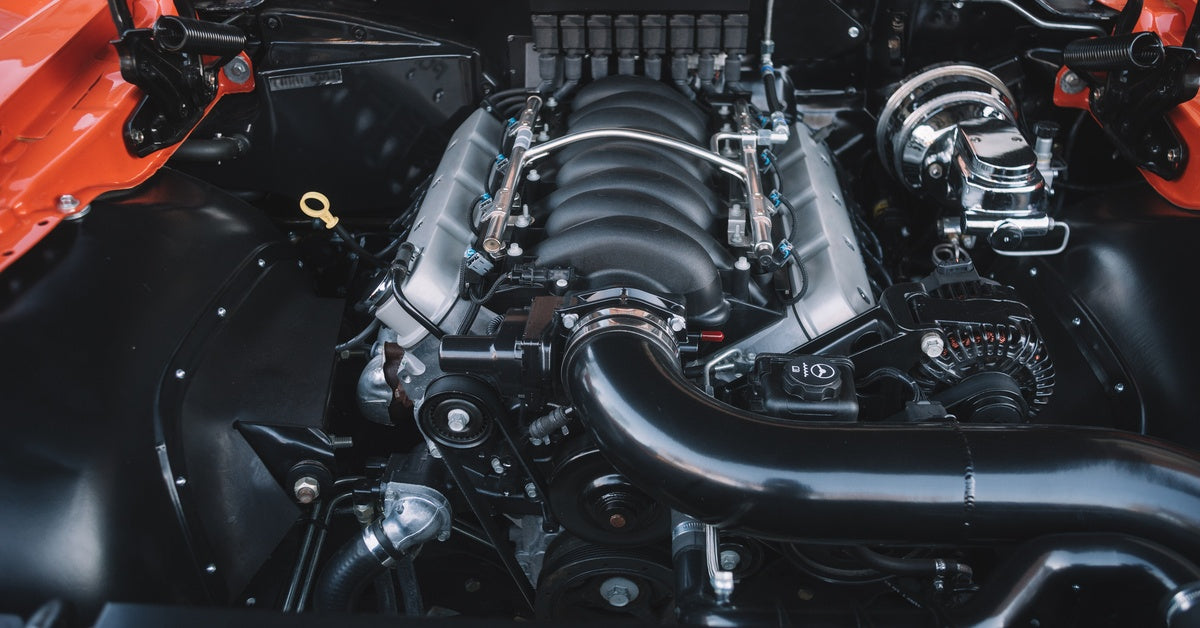
Maintenance is necessary for all vehicles. While standard models run under normal loads, high-RPM (revolutions per minute) engines face extreme levels of stress and heat that can deteriorate spark plugs faster. If you’re pushing your engine to its limits, you must pay special attention to these components to sustain optimal power and efficiency.
For drivers and professionals seeking peak performance, this guide outlines how to maintain spark plugs in high-RPM engines.
What Are High-RPM Engines?
High-RPM engines are designed to run efficiently at higher rotational speeds. They’re commonly found in sports cars, motorcycles, and racing applications. Advanced engineering allows them to withstand the intense mechanical stresses of rapid rotation with their lightweight parts and high-strength materials.
Maintaining these engines properly is essential, as their demanding operation requires precise timing and robust components to perform well.
1. Choose the Right Spark Plug Design
Not all spark plugs are the same, especially for supercharged engines. Plugs like the E3 DiamondFIRE incorporate advanced electrode designs that better direct the spark and encourage efficient combustion. A high-quality plug combats heavy wear and provides consistent performance, which is critical when dealing with the stress of high speeds.
A colder heat range spark plug is often recommended to handle increased combustion temperatures. Iridium or platinum plugs are more durable and provide better conductivity, aiding ignition. Check your engine’s specifications for compatibility.
2. Check the Gap Regularly
The gap between the spark plug’s center and ground electrode determines how effectively it ignites the air-fuel mixture. Engine vibrations and wear can widen or shrink that gap after prolonged use, affecting performance. Use a feeler gauge to measure and adjust the gap according to your engine’s specifications. This simple step goes a long way toward keeping your engine running smoothly.
The correct spark plug gap prevents misfires under extreme conditions. A smaller gap can improve ignition reliability for these engines but may reduce efficiency. Always consult your engine manufacturer’s recommendations to avoid potential damage.
3. Inspect for Fouling

Fouled spark plugs covered in residue can lead to performance loss because they prevent the spark plug from generating a strong spark. A visual inspection every few months can help you detect this issue, and cleaning or replacing the plugs will resolve it before it impacts your engine.
Fouling is more common in higher revolutions due to increased fuel consumption and heat levels, which can lead to quicker deposit buildup. The correct heat range can reduce fouling under these conditions.
4. Replace Plugs at Recommended Intervals
High-RPM engines put extra stress on spark plugs, meaning replacement should be a regular occurrence. Follow your vehicle manufacturer’s guidelines, or consider earlier replacement if you’re pushing the engine hard. E3 Spark Plugs offer durability enhancements suited to extreme conditions, making them an excellent choice for less frequent replacements.
Failure to replace spark plugs on time can lead to misfires, reduced fuel efficiency, and engine damage. Be on the lookout for corrosion or worn electrodes to avoid performance issues.
5. Keep an Eye on Your Air-Fuel Mixture
An improper air-fuel mixture can put considerable stress on the spark plugs. Engines running too lean or too rich create more deposits and cause poor combustion. Make it a routine to check the mixture via sensors or diagnostic tools to prevent undue wear on the plugs. This step is especially important for modified engines running at high RPMs.
6. Use Quality Fuel

Low-quality fuel loaded with impurities can lead to carbon buildup on your spark plugs, reducing ignition efficiency. Premium or recommended-grade fuel minimizes deposits. Quality fuel enhances power output, allowing high-performance engines to drive smoothly under intense conditions. It also reduces the risk of knocking, which can damage internal components. Consistently clean combustion means your car engine plugs won’t need excessive repairs or maintenance.
7. Torque Plugs Correctly
Using the correct torque on spark plugs prevents performance issues. Overtightened plugs risk cracking, while loose plugs prevent proper heat transfer. Use a torque wrench to secure the plugs appropriately. A proper fit improves reliability and heat dissipation, especially in high-stakes, high-RPM situations.
Improper torque can also damage the cylinder head threads, leading to costly repairs. Always check the manufacturer’s torque specifications, as they can vary depending on the engine type. For consistent results, confirm your torque wrench is calibrated and in good working condition.
8. Test Ignition Coil Output
The ignition coil sends voltage to your spark plugs. A weak coil delivers inconsistent sparks, which can harm plug performance. Regularly test the coil’s output to identify potential issues before they affect your plugs or engine.
Use a multimeter to measure the ignition coil’s resistance. Look for signs of wear, such as cracks or corrosion, which can impede performance. Testing the coil under load can also reveal issues that may not appear during a static test.
9. Avoid Detonation
Detonation occurs in premature ignition, causing a spike in pressure and temperature inside the cylinder. It can lead to serious engine damage, including cracked pistons or cylinder walls, if left unchecked.
High-RPM engines are at risk of detonation or “knocking,” a condition that adds stress to spark plugs. Make sure to tune your engine and set the timing correctly to prevent this harmful situation.
Using higher octane fuel and proper engine cooling can reduce the risk of detonation. Resolving this issue protects your plugs and engine in the long run.
10. Monitor Temperature and Heat Range
High-RPM engines generate intense heat that can affect spark plug performance. The plugs you use should match the correct heat range for your engine. Using a plug that dissipates heat effectively minimizes the risk of overheating, a common concern for high-RPM setups.
Spark Performance and Advanced Technology
Follow these maintenance practices to maximize your spark plugs’ performance in high-RPM engines. Choosing durable, innovative products, like those from E3 Spark Plugs, ensures superior ignition and heat management. Our advanced DiamondFIRE technology is designed to deliver better combustion, ideal for demanding applications.
Keep Your High-RPM Engine in Top Shape
Taking care of your spark plugs means taking care of your engine. With regular inspections, replacements, and some preventative steps, it’s easier than you think to achieve optimal efficiency. Incorporate these tips into your routine to enjoy a more reliable ride. Stay ahead of obstacles, and keep your engine roaring like it’s meant to.







